The herb parsley (Petroselinum crispum) is rich in nutrients and bioactive compounds and may help support overall wellness. Understanding its benefits is important because even common herbs can contribute meaningfully to nutrition and health when used regularly. This article covers the nutrient profile of parsley, ten evidence-informed benefits it may offer, how to use it, possible side-effects/precautions, dosage/storage advice, and a FAQ section.
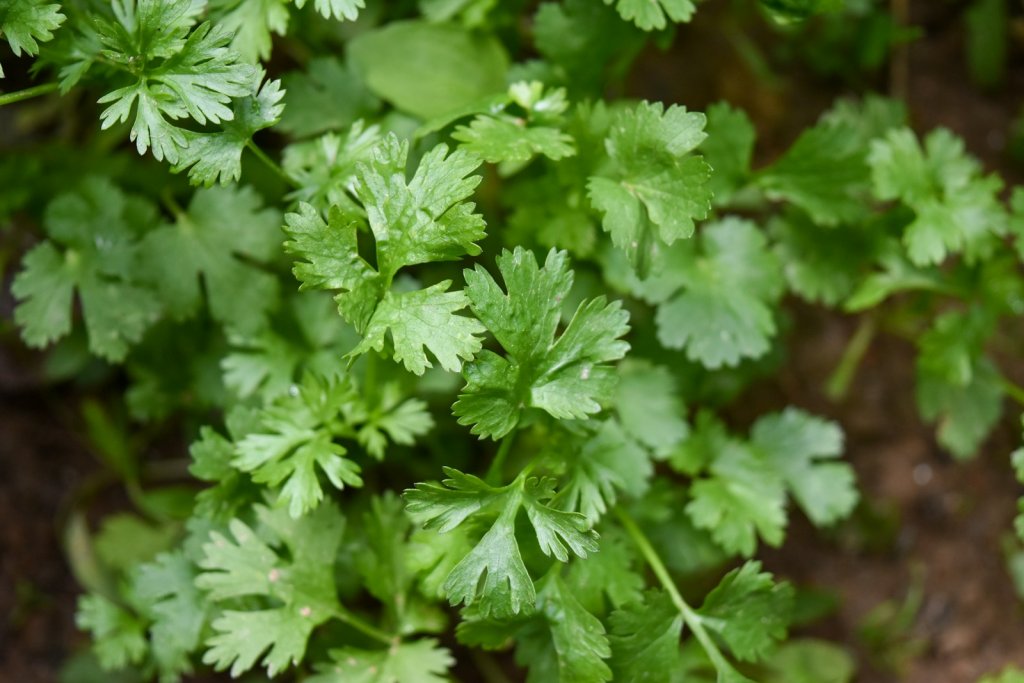
What Is Parsley? (Overview & Origin)
Parsley (Petroselinum crispum) is a fragrant, leafy herb belonging to the Apiaceae family — the same botanical group as celery, carrot, and dill. Native to the Mediterranean region, parsley has been cultivated for more than 2,000 years for both culinary and traditional wellness purposes.
Today it is one of the most widely used herbs worldwide, valued for its bright flavor and impressive nutrient profile.
There are two primary culinary varieties:
- Flat-leaf parsley (Italian parsley): Has smooth leaves and a robust, slightly peppery flavor. Chefs prefer it for cooking because of its stronger aroma.
- Curly-leaf parsley: Recognized by its ruffled leaves and mild taste; often used as a garnish or decorative herb.
Historically, parsley was used by the ancient Greeks and Romans not only as a seasoning but also symbolically for vitality and purification. Modern nutrition science confirms that parsley is rich in vitamins A, C, and K, as well as folate, iron, and potent antioxidants such as apigenin and luteolin.
These nutrients explain why parsley is now recognized as a nutrient-dense herb that supports overall wellness when included regularly in a balanced diet.
(Healthline – Parsley Nutrition Facts and Benefits)
(Harvard T.H. Chan School of Public Health – Healthy Eating Plate)
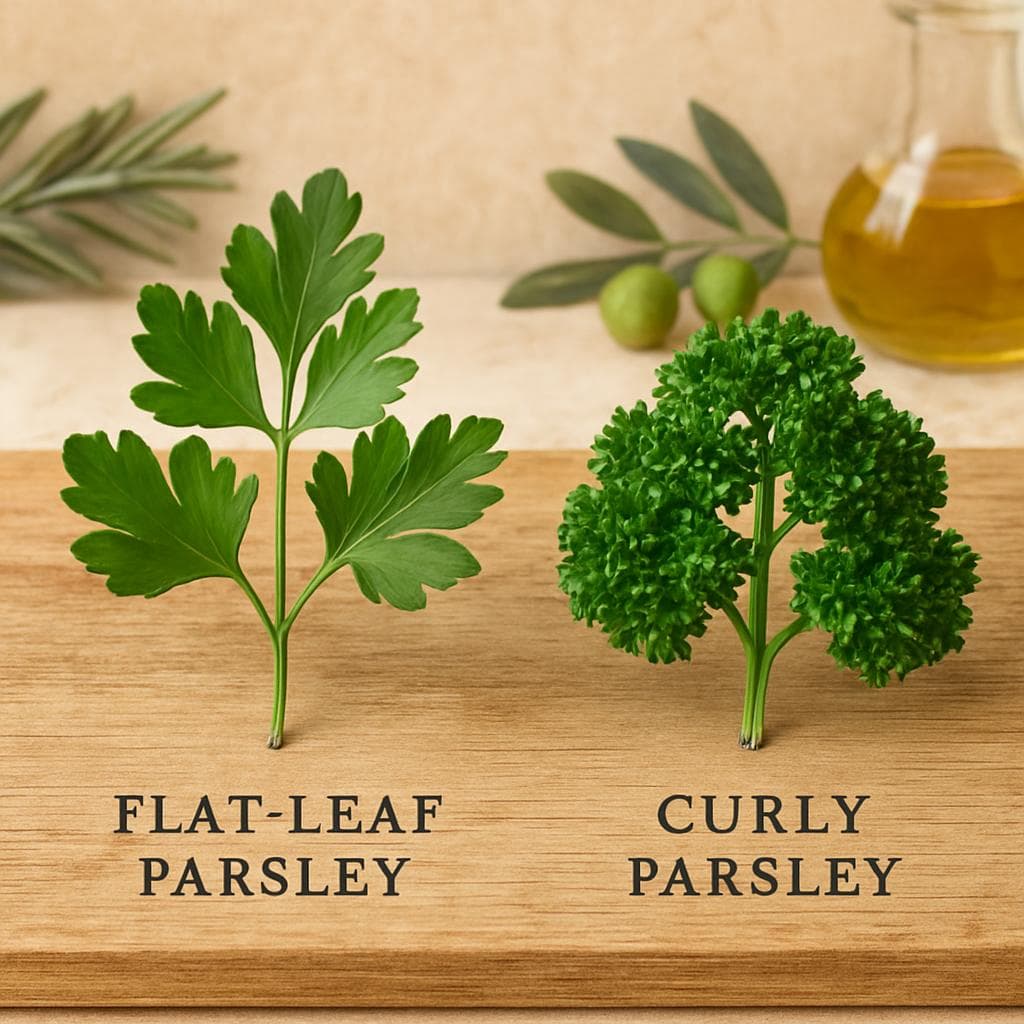
Nutritional Profile of Parsley (per 100 g)
According to USDA FoodData Central (2024), parsley is exceptionally nutrient-dense yet very low in calories. The table below shows the approximate values for raw parsley leaves per 100 grams:
| Nutrient | Amount (per 100 g) | % Daily Value (approx.) | Source |
|---|---|---|---|
| Calories | 36 kcal | — | USDA FoodData Central |
| Protein | 2.97 g | 6 % DV | USDA |
| Carbohydrates | 6.33 g | 2 % DV | USDA |
| Dietary Fiber | 3.3 g | 12 % DV | USDA |
| Total Fat | 0.8 g | 1 % DV | USDA |
| Vitamin C | 133 mg | 148 % DV | USDA |
| Vitamin A (as β-carotene) | 421 µg RAE | 47 % DV | USDA |
| Vitamin K | 1,640 µg | > 1,300 % DV | USDA |
| Folate (B9) | 152 µg | 38 % DV | USDA |
| Iron | 6.2 mg | 34 % DV | USDA |
| Potassium | 554 mg | 12 % DV | USDA |
| Calcium | 138 mg | 11 % DV | USDA |
| Magnesium | 50 mg | 12 % DV | USDA |
Key Takeaways
- Vitamin K powerhouse: One of the richest natural sources, essential for bone strength and proper blood clotting.
- High in antioxidants: Vitamins C and A contribute to immune protection and eye health.
- Mineral support: Contains iron and potassium, which support red-blood-cell production and heart function.
- Low in calories: Only 36 kcal per 100 g, making it ideal for nutrient-dense meal planning.
Including parsley regularly — whether sprinkled on salads, blended into smoothies, or used in sauces — is an easy way to enhance micronutrient intake naturally.
(USDA FoodData Central – Parsley, Raw)
(Cleveland Clinic – Vitamin K and Bone Health)
10 Science-Based Health Benefits of Parsley You Should Know
Parsley is more than a garnish — it’s a nutrient-dense herb with powerful bioactive compounds that may support bone strength, heart health, immunity, and overall wellness. Below are ten science-backed benefits explained with up-to-date research and authoritative references.
1. Supports Bone Health
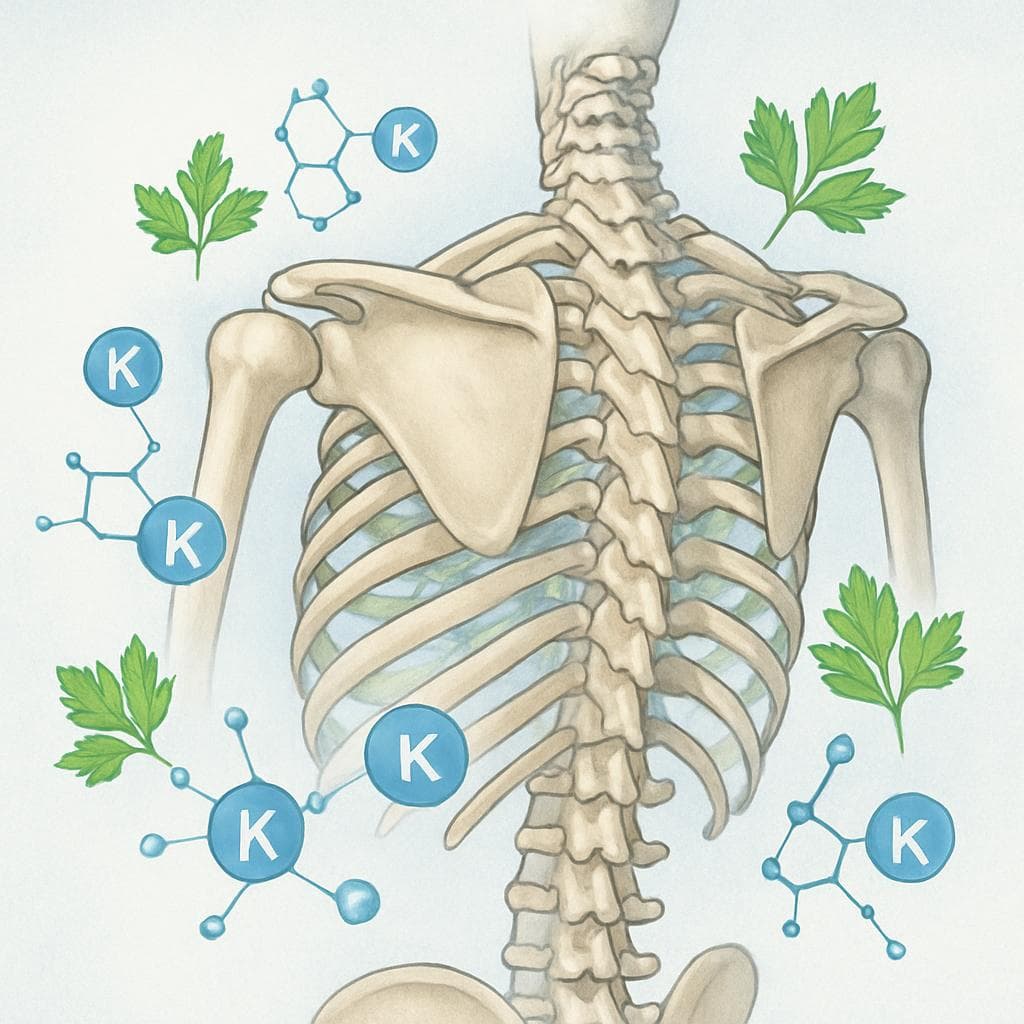
Parsley is exceptionally rich in vitamin K, an essential nutrient that supports bone mineralization and helps activate osteocalcin — a protein required for bone formation.
According to Healthline, just 2 tablespoons (≈ 8 g) of fresh parsley provide over 150 % of the daily value for vitamin K, which contributes to maintaining bone density and lowering fracture risk in observational studies.
A diet high in vitamin K has also been associated with reduced risk of hip fractures in adults (National Institutes of Health Office of Dietary Supplements).
2. Provides Antioxidant Protection
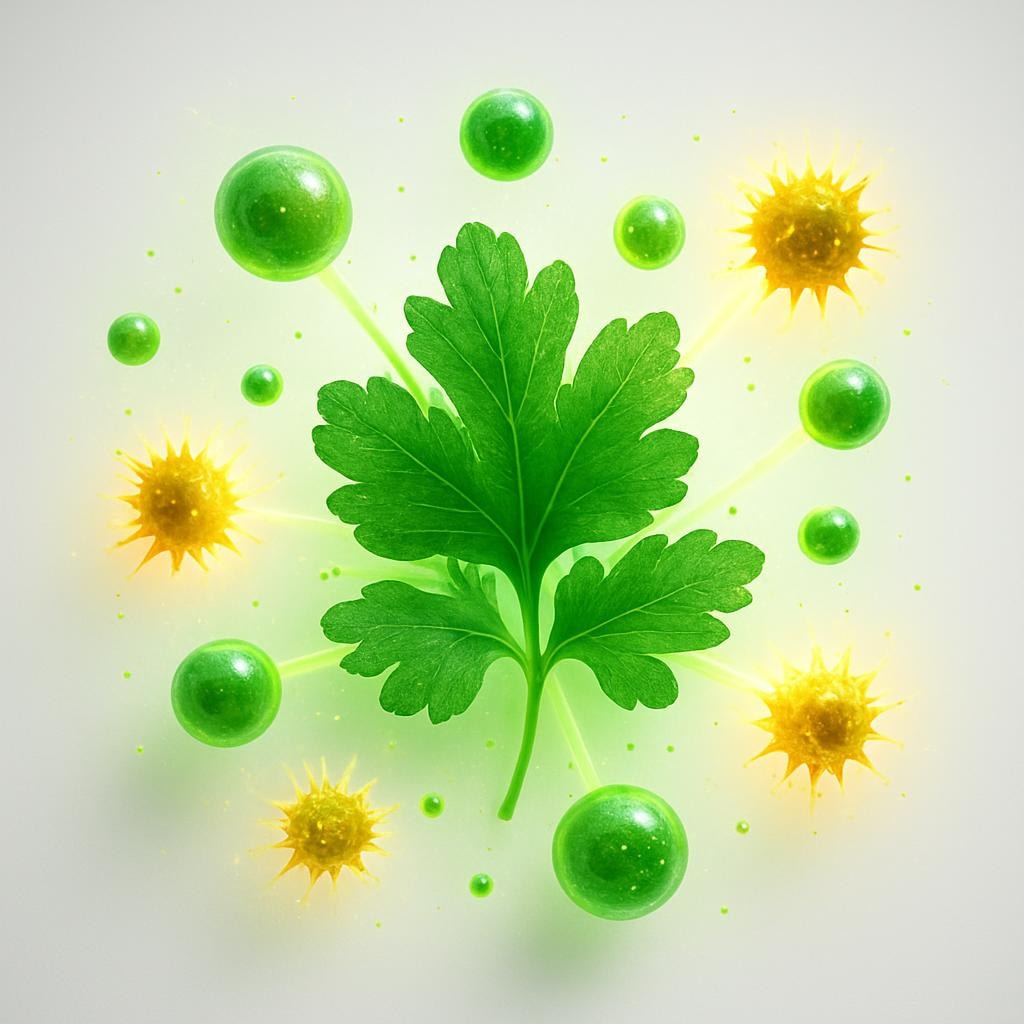
Parsley contains a wide spectrum of antioxidants, including flavonoids (apigenin, myricetin, luteolin) and carotenoids (lutein, zeaxanthin, beta-carotene). These compounds may help protect cells from oxidative stress by neutralizing free radicals.
Research published in the National Library of Medicine (PMC) shows that parsley’s phenolic compounds exhibit strong antioxidant capacity comparable to other leafy herbs.
Additionally, Healthline notes that vitamin C in parsley further supports immune defense and protects against environmental oxidative damage.
3. May Support Heart Health

Parsley provides folate (vitamin B9), vitamin C, and other phytochemicals that may support cardiovascular health. Folate helps regulate homocysteine — a compound linked to artery stiffness and cardiovascular risk when elevated.
A review in the journal Medicines (MDPI) reports that parsley extract exhibited antihypertensive and antithrombotic activity in preclinical models, suggesting possible blood-pressure-lowering and vessel-protective effects.
While more human research is needed, including parsley in meals aligns with a heart-healthy, plant-rich diet.
4. Supports Immune and Eye Health
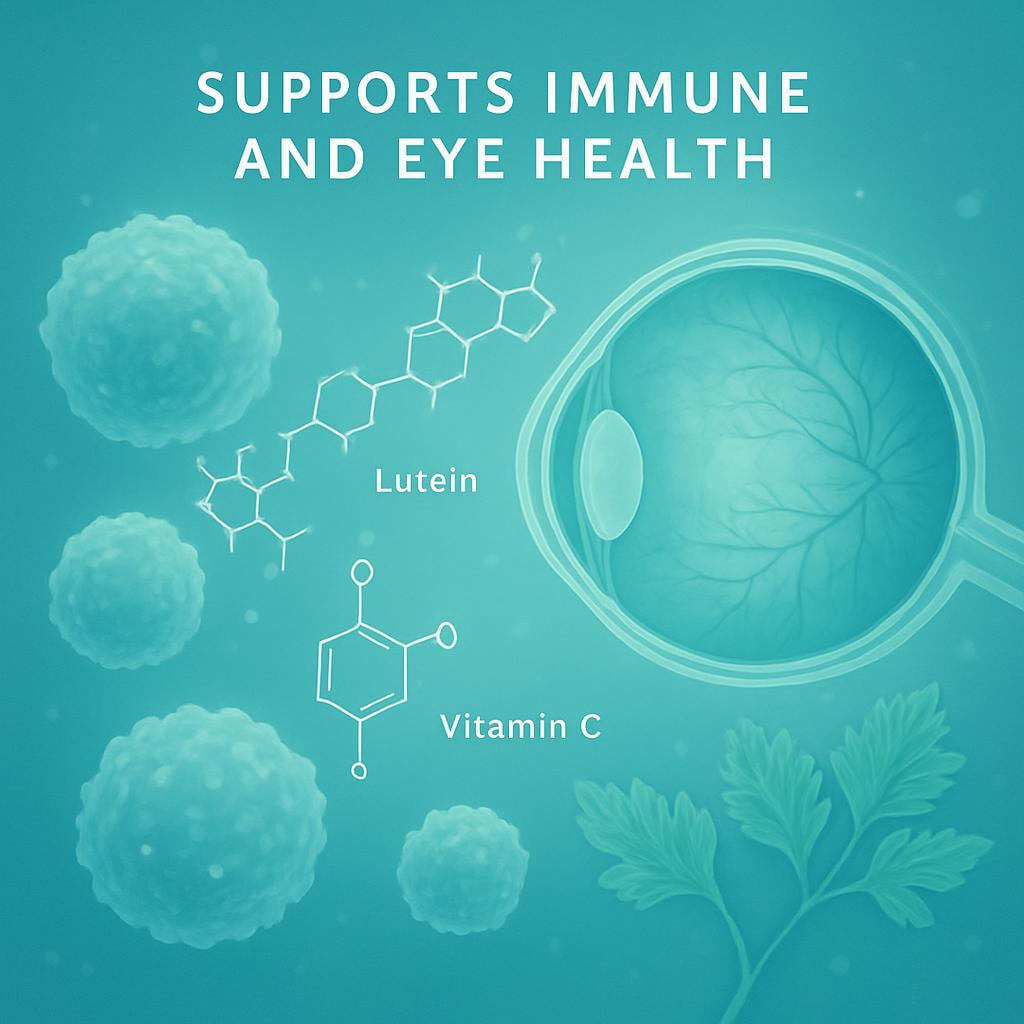
Because parsley is rich in vitamin C, beta-carotene, lutein, and zeaxanthin, it may help support immune function and protect eye tissues.
According to Verywell Health, vitamin C supports white blood cell function and collagen synthesis, while carotenoids may protect the retina from oxidative damage and reduce risk of age-related macular degeneration.
Regular consumption of colorful herbs and vegetables like parsley has been associated with better immune resilience and eye health in epidemiological research.
5. May Support Kidney and Renal Function
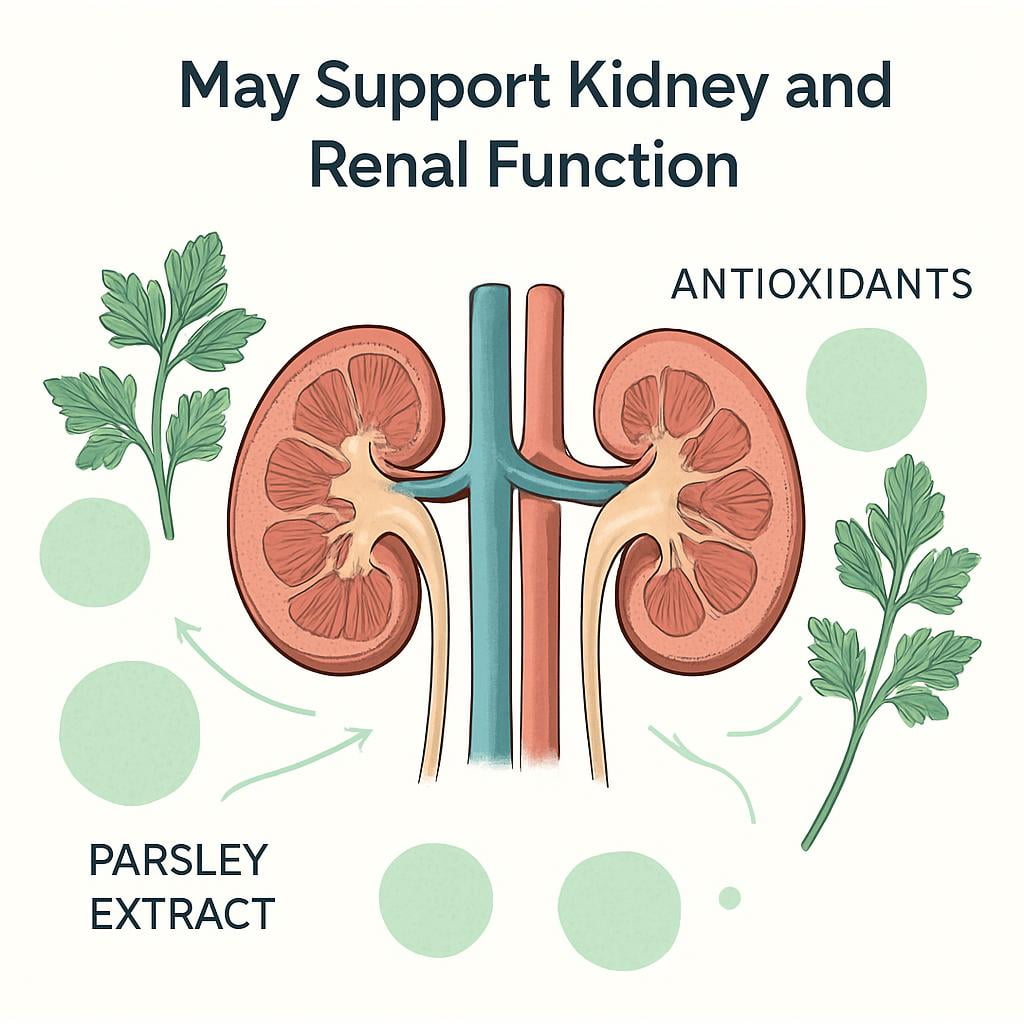
Emerging studies indicate that parsley extracts may help maintain kidney health by supporting antioxidant defenses and reducing oxidative stress.
A 2024 paper in the National Library of Medicine (PMC) found that parsley extract improved renal biomarkers and helped regulate urine composition in experimental models.
These effects are attributed to its flavonoid and essential-oil components, though human clinical trials are still limited. Consuming parsley as food is generally safe and can support hydration and detox balance.
6. May Support Healthy Blood Sugar and Metabolic Health
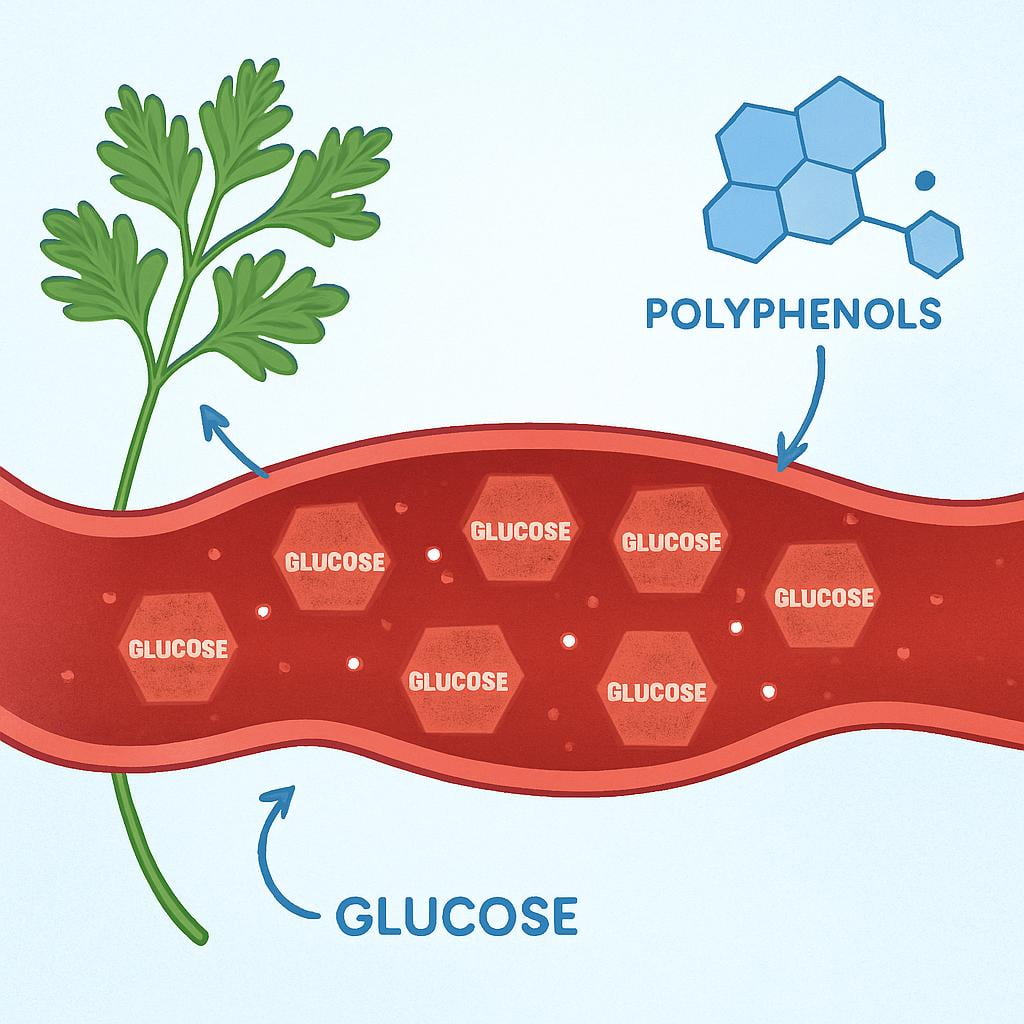
Parsley’s polyphenols and flavonoids (especially apigenin and myricetin) may help regulate glucose metabolism and insulin sensitivity.
Animal and in-vitro studies summarized by the Italian Journal of Food Science report that parsley extract may lower blood glucose levels and improve antioxidant enzyme activity.
Although these effects need confirmation in human studies, parsley remains a beneficial addition to balanced diets for maintaining healthy metabolism.
7. May Support Digestive and Detoxification Processes
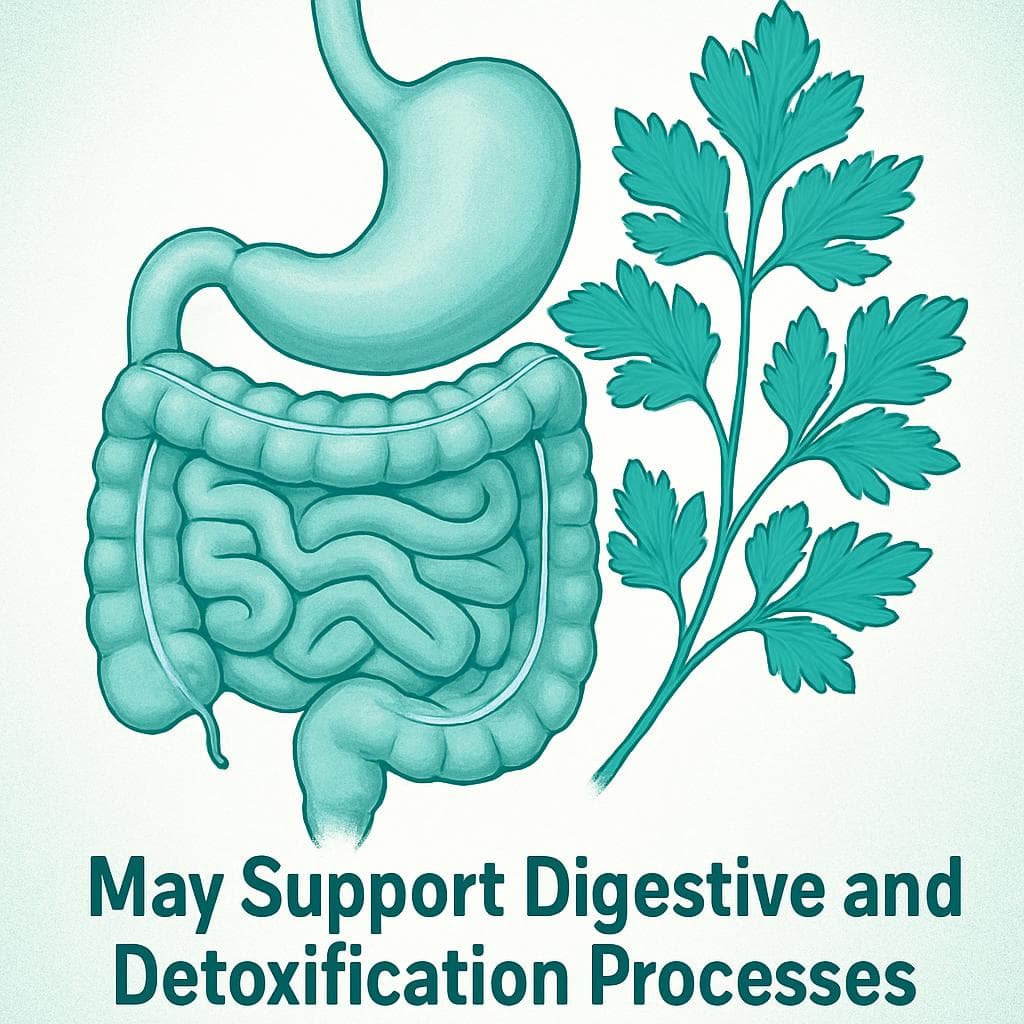
Parsley has been used in traditional herbal medicine to support digestion and natural detox pathways. It contains chlorophyll, fiber, and volatile oils that may stimulate digestive enzymes and support liver function.
As documented by the University of Iowa’s “Roots of Medicine” project, parsley was historically valued as a mild diuretic and digestive aid.
Modern nutrition science supports moderate consumption of fiber-rich herbs like parsley as part of a diet that promotes healthy digestion and elimination.
8. May Protect Against Certain Cell Damage and Support Tissue Health
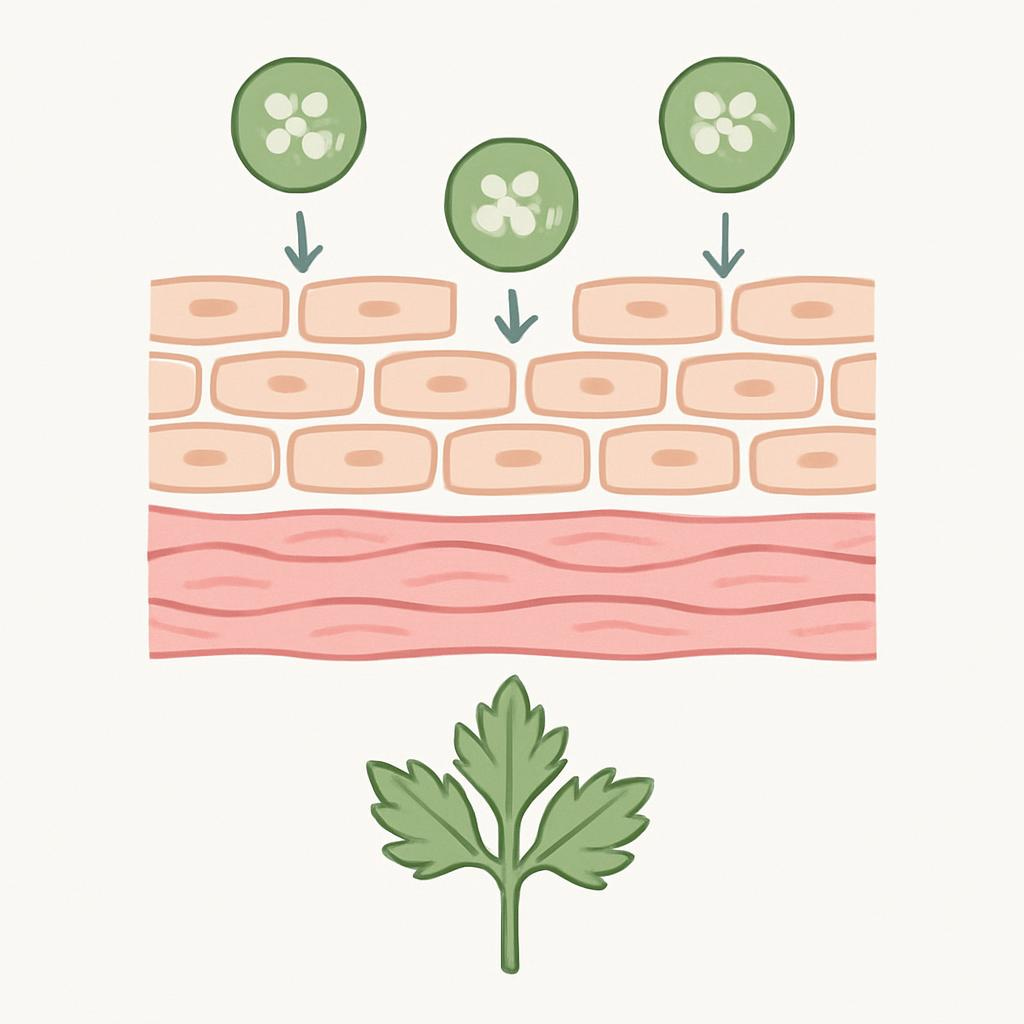
Flavonoids and vitamin C in parsley may help reduce cell damage and support tissue repair.
Research from the National Library of Medicine (PMC) shows that parsley extract demonstrated antioxidant and anti-inflammatory effects in experimental muscle and skin models.
These findings suggest that parsley’s compounds may contribute to maintaining healthy tissues under oxidative stress, though human data are still emerging.
9. Is Nutrient-Dense with Minimal Calories
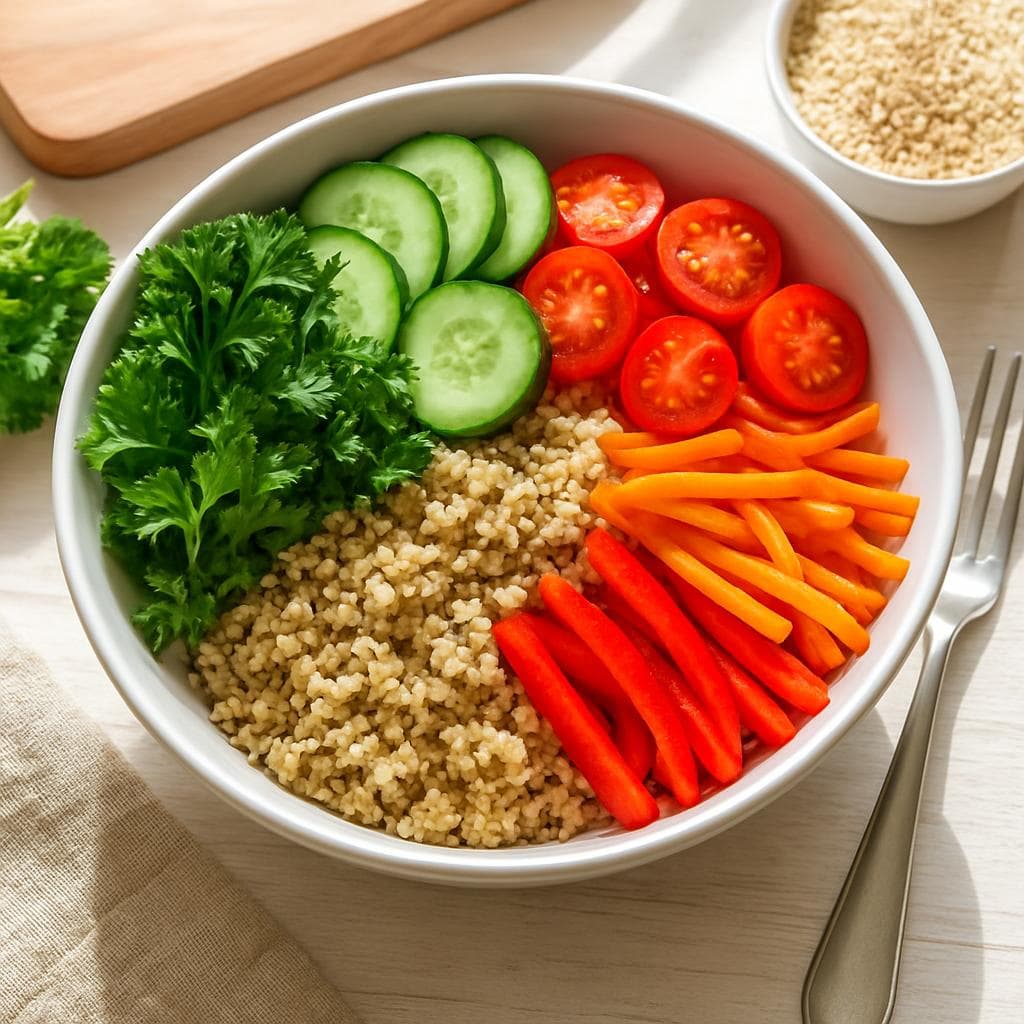
Parsley delivers an impressive amount of nutrients for very few calories. One cup (≈ 60 g) provides more than the daily requirement for vitamin K, 50 % of vitamin C, and meaningful amounts of vitamin A, folate, and iron — all for under 25 calories (USDA FoodData Central).
This makes parsley an ideal ingredient for increasing nutrient density in everyday meals without adding excess calories.
10. Supports Overall Wellness Through Food Variety
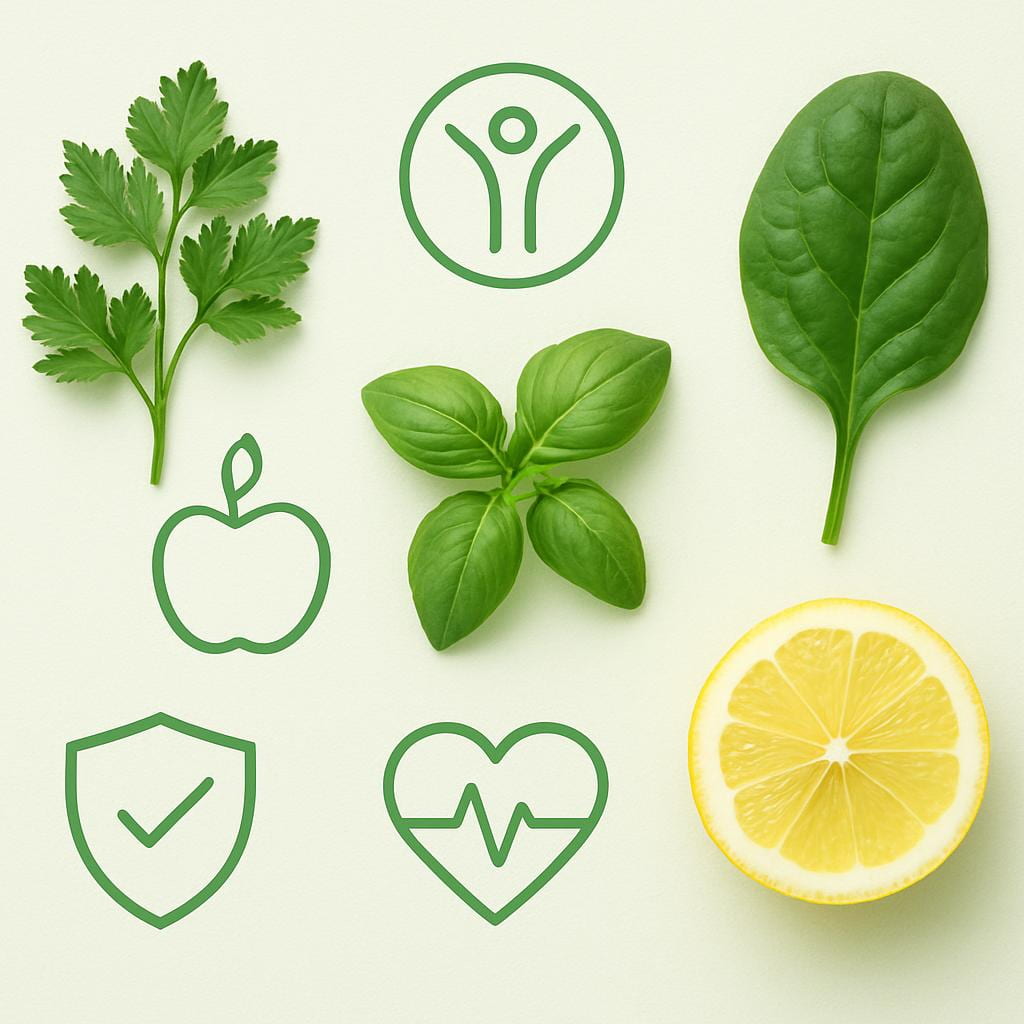
Incorporating herbs like parsley into daily cooking supports dietary diversity, a key marker of overall wellness and longevity.
As highlighted by the Harvard T.H. Chan School of Public Health, a varied plant-rich diet ensures a broader intake of antioxidants, vitamins, and minerals that collectively promote long-term health.
Using parsley alongside vegetables, whole grains, and healthy fats contributes to balanced nutrition and overall vitality.
How to Eat Parsley for Maximum Benefits
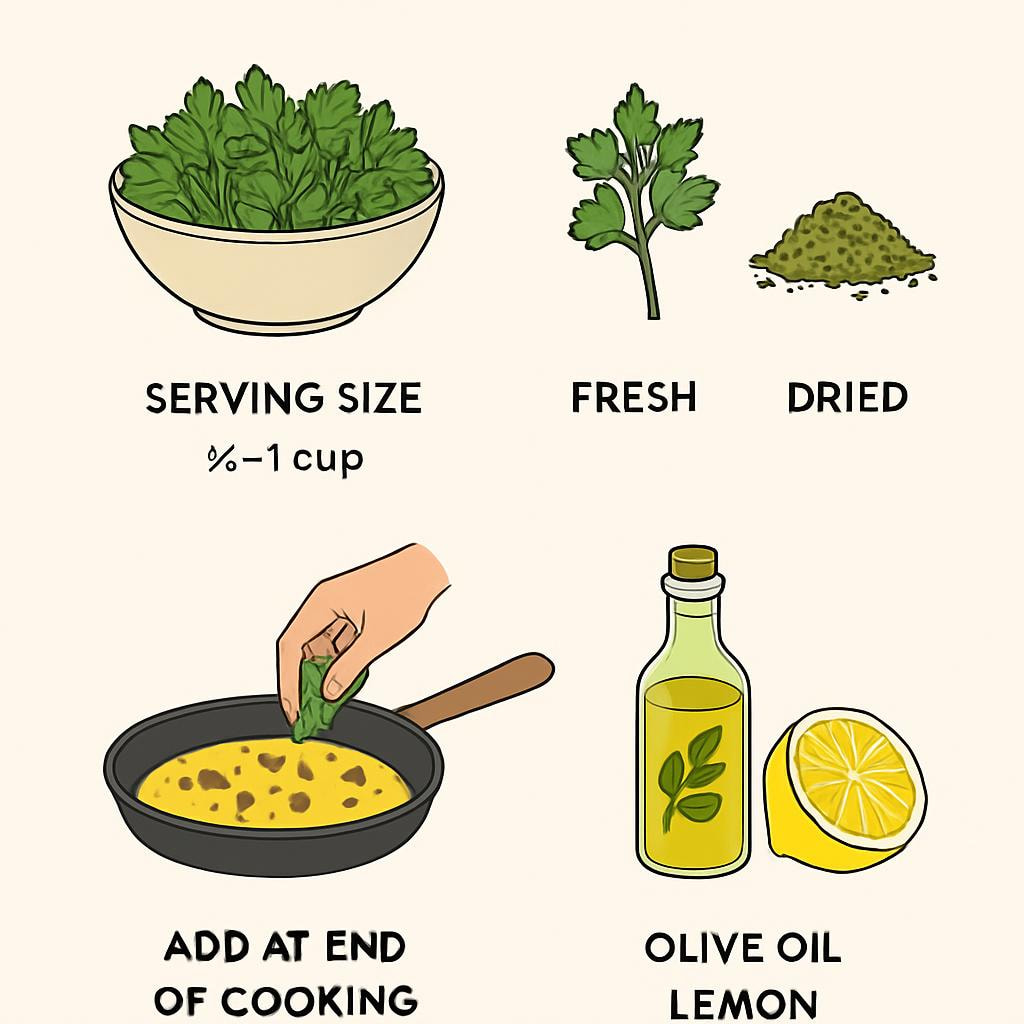
To get the most nutrition from parsley, it’s best to consume it fresh and as part of daily meals rather than in concentrated extracts.
- Serving size: ½–1 cup of fresh chopped parsley (≈ 30–60 g) several times a week is ideal for general wellness. Even small daily amounts provide abundant vitamin K, C, and antioxidants. (Healthline)
- Preparation: Chop fresh leaves finely to release natural oils and flavor. Add parsley near the end of cooking to preserve delicate vitamins and aroma.
- Juiced or blended: Parsley juice or smoothies may offer a concentrated nutrient boost when combined with cucumber, lemon, or apple.
- Dried parsley: Retains antioxidant compounds but loses some vitamin C—use it when fresh is unavailable. (Verywell Health)
- Pairing tips: Combine parsley with healthy fats like olive oil or avocado to enhance absorption of fat-soluble vitamins A, E, and K. A squeeze of lemon or other vitamin C–rich foods can improve iron uptake.
Regularly adding parsley to salads, soups, omelets, or sauces such as chimichurri or tabbouleh is a simple way to increase nutrient density and culinary variety.
Possible Side Effects and Precautions (Safety & Compliance)
Parsley is considered safe in normal food quantities, but certain individuals should exercise caution.
- Vitamin K interaction: Parsley is extremely high in vitamin K (over 1,600 µg per 100 g). People taking anticoagulant medications like warfarin should maintain a consistent intake and consult their healthcare provider before major dietary changes. (NIH Office of Dietary Supplements)
- Pregnancy and breastfeeding: While parsley as food is safe, large medicinal doses or essential oil extracts may stimulate uterine contractions and are not recommended during pregnancy. (Cleveland Clinic)
- Allergies: Those allergic to plants in the Apiaceae family (celery, carrots, fennel) may experience mild allergic reactions. Discontinue if rash or irritation occurs.
- Kidney or diuretic considerations: Parsley’s natural diuretic effect may enhance urine flow; people on diuretic medication should use moderate amounts and consult their physician.
- Avoid excess extracts: High-dose supplements or oils can be concentrated and lack long-term safety data—prefer food-based consumption.
Always seek professional medical advice if you have health conditions or are on prescription medications.
Storage and Food Safety Tips
Proper handling and storage of parsley are vital to maintain its nutritional quality, freshness, and safety. Because fresh herbs can harbor surface bacteria from soil or handling, following federal food-safety practices reduces contamination risk.
The U.S. Food and Drug Administration (FDA) provides current, science-based guidelines for washing and storing herbs and leafy greens safely.
(FDA – Selecting and Serving Produce Safely)
Safe Storage Practices
- Rinse under running water: Wash parsley thoroughly under cool running water before use to remove dirt and microorganisms. The FDA advises not to use soap or detergent on fresh produce, as residues may absorb into leaves.
- Refrigerate promptly: Store parsley at 40 °F (4 °C) or below in a clean, covered container or resealable bag to slow bacterial growth and preserve vitamins such as C and folate.
- Maintain freshness: Wrap parsley loosely in a damp paper towel or place stems upright in a small jar of water, covering loosely with a plastic bag. This keeps the leaves crisp for up to 7 days.
- Prevent cross-contamination: Keep parsley separate from raw meat, poultry, or seafood. Wash hands, knives, and cutting boards with warm, soapy water after handling raw foods.
- Freeze for longer storage: Chop and freeze parsley in airtight containers or with olive oil in ice-cube trays for up to 6 months to retain flavor and key nutrients.
- Check quality: Discard wilted, slimy, or foul-smelling leaves immediately to avoid bacterial contamination.
Following these FDA-recommended steps helps ensure parsley remains safe to eat while preserving its bright color, flavor, and nutrient density.
Reference: U.S. Food and Drug Administration – Selecting and Serving Produce Safely
Frequently Asked Questions (FAQ)
1. Is it better to eat parsley raw or cooked?
Raw parsley retains more vitamin C and chlorophyll, while lightly cooked parsley still provides minerals and vitamin K. Adding it toward the end of cooking balances taste and nutrition.
2. Can parsley help with weight management?
Parsley is low in calories but high in fiber and micronutrients. It may support satiety and hydration, which can complement a healthy weight-control plan.
3. Is dried parsley as nutritious as fresh?
Dried parsley keeps many antioxidants but loses water-soluble vitamins like C. Fresh parsley is generally more nutrient-dense. (Healthline)
4. Can I drink parsley tea or juice daily?
Small servings of parsley tea or juice are safe for most healthy adults, but avoid excessive intake if pregnant or taking diuretics. Moderation is key.
5. Does parsley really support kidney health?
Some preclinical studies suggest parsley extract may help support kidney antioxidant balance, but human research is limited. It’s best viewed as a supportive food, not a therapy. (PubMed Central)
6. How long can I keep fresh parsley in the fridge?
Properly stored, fresh parsley lasts about 5–7 days. Wash only before use to reduce moisture-induced spoilage.
7. Can children eat parsley safely?
Yes, parsley is safe for children in normal food quantities and provides valuable vitamins. Always chop finely to reduce choking risk.
Conclusion
Parsley is far more than a decorative garnish—it’s a nutrient powerhouse rich in vitamin K, vitamin C, and antioxidant flavonoids that may support bone strength, heart health, immunity, and overall wellness. Regular use of fresh herbs like parsley enhances both flavor and nutritional value of meals.
Always consume parsley in food amounts, pair it with other nutrient-dense foods, and follow proper food-safety practices.
For anyone on medication, pregnant, or with health conditions, it’s best to consult a healthcare provider before major dietary changes.
This content is for informational purposes only and not medical advice.
References
- U.S. Department of Agriculture (USDA) FoodData Central – Parsley, Raw
- National Institutes of Health (NIH) – Vitamin K Fact Sheet for Health Professionals
- Healthline – Parsley: Nutrition Facts and Health Benefits
- National Library of Medicine (PMC) – The Potential of Parsley Polyphenols and Their Antioxidant Capacity
- Medicines (MDPI Journal) – What Is New about Parsley, a Potential Source of Cardioprotective Agents
- PubMed Central (PMC) – Renal Health Benefits and Therapeutic Effects of Parsley (Petroselinum crispum)
- Harvard T.H. Chan School of Public Health – Healthy Eating Plate
